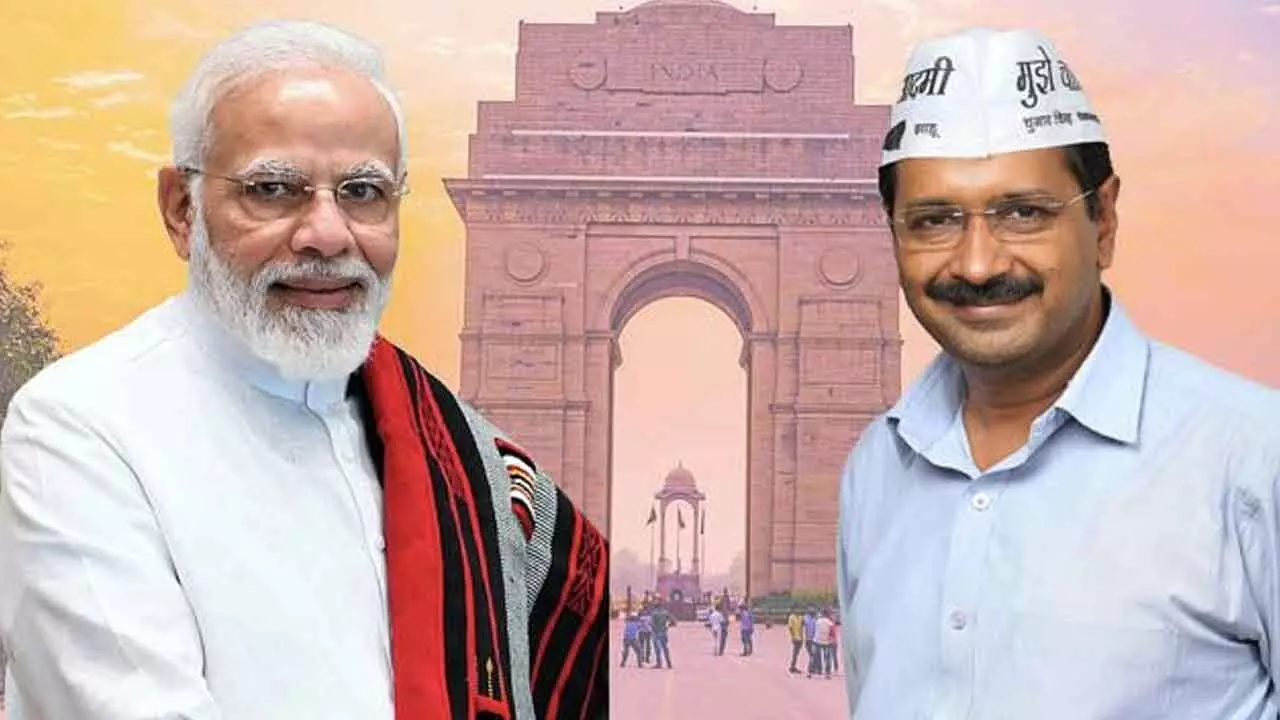Delhi Government And The Centre Must Work In Tandem For State’s All-Round Development
After the Delhi Assembly was dissolved in 1956, the Centre had direct control over its administration
Delhi Government And The Centre Must Work In Tandem For State’s All-Round Development

It led to an intense battle seeking division of powers between the Narendra Modi government at the Centre and the Arvind Kejriwal government in Delhi, which now is neither a full state nor a union territory
Delhi Assembly elections have been scheduled for February 5. A unique facet of the Delhi government is that it has very limited powers as crucial issues like land and police in the state come under the purview of the Union Government, implying that the state has virtually no control over the police. As it is unlikely to get the status of a full-fledged state, tensions between the central and Delhi governments will remain even after the Assembly elections. It is to be noted that the struggle over distribution of powers between the Centre and the Delhi government had started when the Chaudhary Brahm Prakash-led Congress government was formed in Delhi in 1952. This struggle will continue into the future.
Aam Aadmi Party (AAP) has been accusing the central government of not giving it enough powers to go about its intended works. It is only when the AAP leadership criticises the Centre that Brahm Prakash is remembered.
After the Delhi Legislative Assembly was dissolved in 1956, the central government had direct control over its administration. It was during this period that the Delhi Municipal Corporation (DMC) and Metropolitan Council were formed. Delhi got its Legislative Assembly again during the tenure of Prime Minister P.V. Narasimha Rao. Madanlal Khurana, Sahib Singh Verma, Sushma Swaraj and Sheila Dikshit became its chief ministers of Delhi. Although, there were governments of different parties at the Centre and in Delhi, work of the Delhi government continued without any hindrance or obstruction, though there were demands for giving more rights to the Delhi government.
Post its dissolution, the BJP (formerly Jan Sangh) and Congress demanded that Delhi should get the status of a full state with the former considering Delhi as its own. It also had a base here. The Jan Sangh was founded in Delhi in 1951. The demand for granting full statehood to Delhi gained momentum again in the 1970s. Indira Gandhi imposed emergency in the country in 1975, which subsequently saw Janata Party forming the government at the Centre in 1977. Jan Sangh was merged into the Janata Party and its leaders continued their demand that it was necessary to give full state status to Delhi for its all-round development.
Meanwhile, this demand was also orchestrated by the Congress and the issue became more vocal in the late 1980s. The Bharatiya Janata Party (BJP), which was formed in 1980, suffered a crushing defeat in the 1984 Lok Sabha elections in Delhi. It was then that the BJP felt the need to launch full-throttled demand for a full statehood for Delhi.
In 1987, the Centre constituted a committee headed by Justice R.S. Sarkaria that was subsequently changed to Justice Balakrishnan Committee. The panel, which was tasked to see the need to reorganize the system in Delhi, found that most of the leaders and the people backed a full state status to Delhi. The central government introduced a bill in Parliament in May 1990 seeking to give statehood to Delhi, which it got in 1991. In the 1993 assembly elections, Madan Lal Khurana became the Chief Minister but the Assembly enjoyed only symbolic powers. The possibility of getting full statehood remained a distant dream.
After AAP rode to power in 2015, the earlier harmony and coordination between the Centre and the Delhi government came to an end. It led to an intense battle seeking division of powers between the Narendra Modi government at the Centre and the Arvind Kejriwal government in Delhi, which now is neither a full state nor a union territory. Delhi is counted among the big states of the country in terms of population. It would be better if the central government makes a clear policy regarding this. The dispute remains in Delhi because the distribution of powers is not clear.
In the ongoing tussle, the Congress has been seen standing with the Modi government. Senior Congress leaders Ajay Maken and Sandeep Dixit have been continuously criticising the AAP government with the former labelling Kejriwal as an anti-national.
Moreover, as several foreign embassies and high commissions have their India offices in Delhi, the state government cannot be completely handed over power. But the central government will do well if its stops interfering in the working of the Delhi government through the Lieutenant Governor. Anyway, there should be an all-round development of the capital of the country. In this regard, the central and Delhi governments will have to work together.
(The author is Delhi-based senior journalist and writer. He is author of Gandhi's Delhi which has brought to the forth many hidden facts about Mahatma Gandhi)

